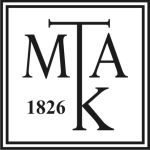Az egyházak és az állam közötti viszony modernizálásának modelljei
Kajtár István emlékére
DOI:
https://doi.org/10.15170/DIKE.2020.04.01.05Kulcsszavak:
modernization, church and state, comparative legal historyAbsztrakt
Honouring the memory of István Kajtár, this paper reviews the English, American, French and German modernization models of the connection between Church and State. The reason behind the historical comparative law method can be shown with a part from the speech of the Minister of Culture, József Eötvös given at the House of Representatives on 16th February, 1870: “When defining the connection between Church and State, only two systems can be followed in a constitutional country, where the equality principle is a starting point: either the State has equal impact on each confession or every confession is completely free. The first one was favoured by many and considered the only right and true constitutional system after the principles established in 1789 in France. The other one is the system of freedom, which can be seen in America and in Switzerland and which will root in such proportion as real freedom in every country of the world. There is either a state religion or oppressed religion, but in a constitutional state, both are impossible.”
Downloads
Megjelent
Hogyan kell idézni
Folyóirat szám
Rovat
License
Open Access politika: A folyóirat nyílt és korlátlan hozzáférést biztosít a tartalmához. Bárki jogosult a közzétett tartalmak letöltésére, felhasználására, nyomtatására, terjesztésére és/vagy másolására a nemzetközileg elfogadott tudományetikai normáknak megfelelően.
A folyóirat (Kiadó) szabadon elérhetővé és letölthetővé teszi a cikkeket saját hivatalos, kiadói honlapján, időbeli korlátozás nélkül. A cikk első közzétételének joga kizárólagosan a Kiadót illeti. A Szerző elfogadja, hogy a Kiadó a cikket oly módon teszi közzé, hogy a cikk felhasználási jogaira bármely harmadik fél számára az első közzétételt követően a Creative Commons Attribution-NonCommercial-SharAlike 4.0 (CC-BY-NC-SA 4.0) licenc feltételek az irányadók. A Kiadó e licensz keretében átalakíthatja a cikket tetszőleges elektronikus formátumba, a cikket számítógéppel vagy elektronikus adathordozóra másolhatja. A Kiadó a cikk közlési és felhasználási jogát megoszthatja bármely harmadik féllel, illetőleg e jogokat bármely harmadik féllel közösen gyakorolhatja. A Kiadó a Szerző nevében felléphet a cikkel kapcsolatos jogsértések, jogtalan felhasználás és szellemi tulajdon sérelmét jelentő magatartások esetén. Gyakorolhatja mindazon jogokat, amelyeket a fent megjelölt „CC BY NC SA 4.0” licenc feltételek lehetővé tesznek harmadik felek számára.










